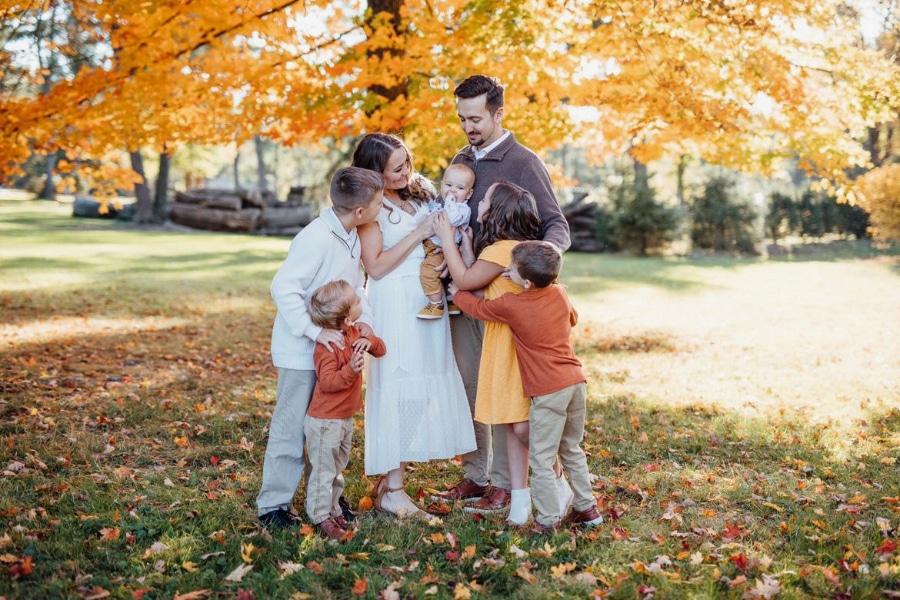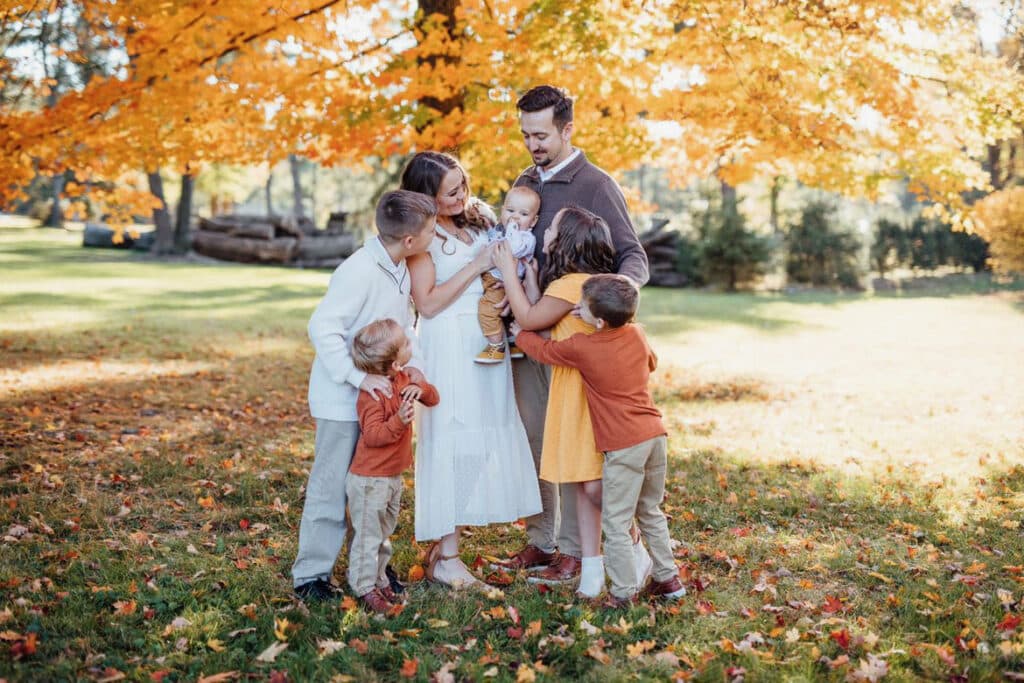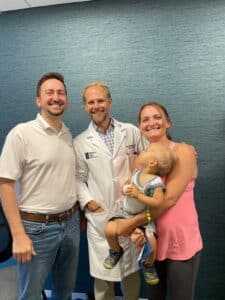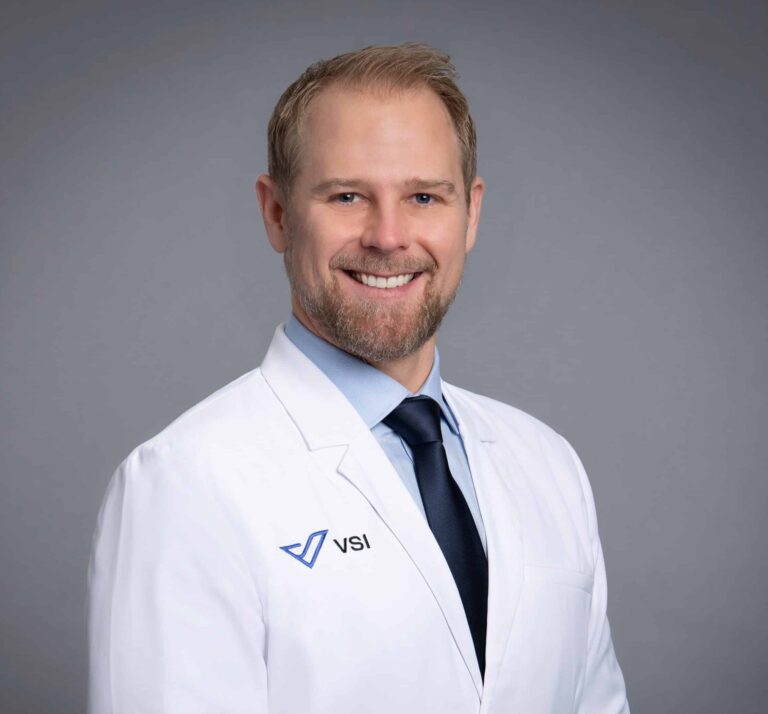
Love’s Resilience: Overcoming Back Pain Together
For Valentine’s Day this year, I want to share a powerful love story — not the kind that focuses on first dates, first kisses or over-the-top marriage proposals. I’m talking about partners in pain — and how you help the one you love when debilitating back pain takes over their life. 80% of Americans experience back pain at some point in their life so that’s a lot of partners impacted too.
How do you love someone through that? We can learn a lot about that from Brian and Naomi Whittaker.
Brian and Naomi’s Story
Brian and Naomi met in high school and by senior prom they were a couple. Early in their relationship, Brian was extremely active. He played a lot of sports — and then joined the military. He was in the infantry — an extremely active and physical job that required him to wear 100 pounds of gear for exercises that stretched over miles and miles. At some point, there was wear and tear that started to impact his back. His pain was also likely impacted by the fact that he was involved in a vehicle rollover incident too.

When he came home to Naomi after serving in Afghanistan, he suddenly collapsed one day while holding their six month old. That was the first sign of a problem. “I was carrying my son in one arm and headed out for an errand and I dropped my keys, reached down to pick them up and had a really bad back spasm that knocked me to the floor,” Brian recalls. He protected his baby as they fell — but knew something was wrong by the extreme event. “I went down, everything seized up and I was on the floor a good 15 or 20 minutes unable to move,” Brian continues. “That was the first time I had such extreme pain where I couldn’t move and it really started to impact Naomi and my family.”
Naomi says his pain got far more severe very quickly. He tried every intervention imaginable — but it didn’t stop the escalation of pain. “We spent a lot of money and time doing chiropractor visits and any intervention we could think of, but over time, it continued to progress to something more serious. He was in bed more often than not,” she explained.
The couple dealt with Brian’s debilitating pain for 10 years. He spent as many as 9 months at a time in bed unable to get up and move. But because he was young — in his 20s and early 30s at the time, the couple feared back surgery would make things worse and looked for any other solutions they could find. “He kept having one incident after another that would leave him in bed with excruciating pain but we were really concerned about back surgery because we heard all the bad stories, especially for people that are young. We were really afraid to open that door, and we were afraid that opening the door of spine surgery would cause more surgeries and limitations of mobility over time,” Naomi explains.
The impact of chronic pain on a couple
Brian and Naomi have 5 children and say — what they learned in a decade is that pain takes a real toll on both people in a partnership and their children — not just the one physically experiencing it. “I could physically get up, but I couldn’t be upright for more than like ten minutes before the pain would be so overwhelming and the muscle spasms would be so overwhelming that I couldn’t do anything. I couldn’t eat much. I couldn’t work. I couldn’t play with the kids. I remember saying, I feel like an 80 year old,” Brian says.
“He looked like an 80 year old too,” Naomi adds. “His body would curl up from all the spasms. And our whole life revolved around managing his pain. All parts of our lives were affected — physically, financially, emotionally. We couldn’t travel. Life revolved around his back and watching him suffer and not be able to fix it.”
Brian says the pain impacted his mood too — which directly affected Naomi and his children. “I was very irritable because I was in so much pain,” he says. “Naomi was very supportive and that was a big deal. I couldn’t have done it without her. Our family couldn’t have gotten through it without her. I think that’s a big unspoken part of the impact of back pain for couples — the person who is assisting has an enormous load they have to bear. It is really hard. I’m so lucky. Naomi was very loving and caring throughout it all. More than I could ever ask for.”
Charting a new pain-free path
Brian admits he started to lose hope that he could ever live without pain. Naomi says that’s where a partner can also be helpful. She did all the research and that eventually brought them to me. I performed a 1-level disc replacement on Brian in April 2023 and things began to turn around for him right away. Within a week he was noticing significantly less pain. The things that used to trigger his pain suddenly weren’t a problem — like lying in a certain way or moving in a certain way. And about three months after the procedure — he was on vacation with his wife and 5 children at the beach and he was able to boogie board with his kids.

“I was just so excited that he could be a Dad again,” Naomi says.

Today Brian is doing well — feeling like himself again and back to being the husband and father he always wanted to be. “Back pain took so much away from me. I felt like a different person. I couldn’t get away from the pain, It kept me down and my family didn’t get to be around the version of myself that I wanted them to,” he explains.
His advice to others — “if you’re struggling with this kind of back pain is — look into getting care from someone you trust. It is possible to be yourself again. My wife and kids got their husband and father back. I’m so grateful for all I can do again and I know they are too.”
Naomi’s advice is for the partner of the person in pain — Don’t give up hope. Search for answers. And don’t forget to take care of yourself in the process too. “It’s so important to support the person you love, be there for them. Be an advocate by doing research. For me, prayer was important. Exercise helped me cope with the stress. You can only care for someone else once you care for yourself. And find a doctor you trust. Dr. Good was a miracle worker in our story and we’re so grateful for that.”
Watch the Podcast on Youtube
Topics covered
About the Author
Featured Resources
Insights to Achieve a Pain-Free Life


